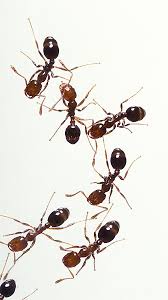Good Teaching is more a giving of right questions than a giving of right answers.
– Josef Albers
Early October, 2009
Fall is an interesting and wonderful time of year for 3rd graders. Spectacular. For one thing wildlife is so abundant. My students love creatures. The other day we spent an hour or so just rooting around in forest soil that a child brought in. It was about a 5-gallon bucket full, so it was a lot of soil. Basically, we just spread it out on white construction paper, on top of newspapers. Then we dove in.
How amazing could a bucket of soil be? More than you could probably imagine. At first there were a few groans because there were very few big animals in the soil. There was a pretty large spider (a gray wolf spider we think). She was put into a separate jar and released. We did get a good look at her. Spiders are amazing creatures and she was very much appreciated. Hairy, multiple eyes, a bunch of leg joints, a big abdomen. We had her in a clear plastic box with a magnifier for the lid so we could really see. We thought she might be ready to lay her egg sac so we released her straight away.
As the kids and I looked closer and closer, we discovered more and more. There were tiny little termites and some very small snails and a species of ant that was almost too small to see. There were a few nice sized earthworms, which the kids sketched diligently. There were some tiny beetles, rolly pollies, centipedes, a couple very big grubs, some termites, and other tiny creatures almost too small to see with the naked eye.
After the larger animals were explored, the really tiny ones were appreciated. I mean some so small you couldn’t see them with the naked eye. Well, out came the magnifiers and the kids were examining soil by the teaspoon. I saw stuff I had never seen before and I know the kids did too. There were many spontaneous expressions of excitement and when one person found something different the others would rush over to share in the energy of rediscovering a creature never experienced.
As lessons go, it was not rocket science. Materials: dirt, magnifiers, pencils, paper. Procedure: Look closely, listen carefully, be amazed. Record your amazements. On the other hand, as lessons go, it was a winner. You could feel the excitement. There was this collective realization – not exactly a surprise, more like a reminder, that there is a huge amount of fascinating creatures right under our feet.
So you know, this wasn’t some random lesson, an arbitrary waste of time. We were studying animals. Rather than merely studying pictures in a science book, we borrowed some real animals from the forest. The children sketched and recorded and got their hands dirty. They held worms and grubs and gazed with intensity at spiders and millipedes. They wondered, described, sketched and asked brilliant questions. Some I could answer, others were answered by their peers. And some questions were left unanswered.
But there was a sense of wonder that is the Holy Grail of inquiry teachers. There are lots of teachers who teach biology without having animals in sight, or walking outdoors to record the ones in the vicinity. There are teachers who teach astronomy without ever looking up at the night sky. There are teachers who don’t to ever seem amazed with their students. I hope that I never stop being amazed.


2 comments:
Once again! The right idea at the right time. Thanks my friend. This time NONE of my students have done it with you so I get to do it too. : )
Miss being next door to you.
Look forward to sharing this with some of my colleagues.
Julie
Maybe we can send you some pics of creatures that may be different in Vietnam soil. WHo knows?
Post a Comment